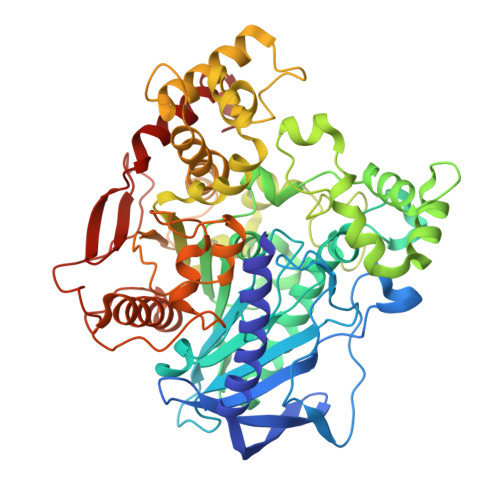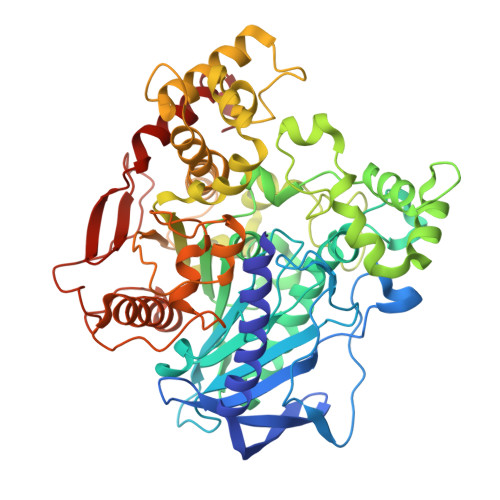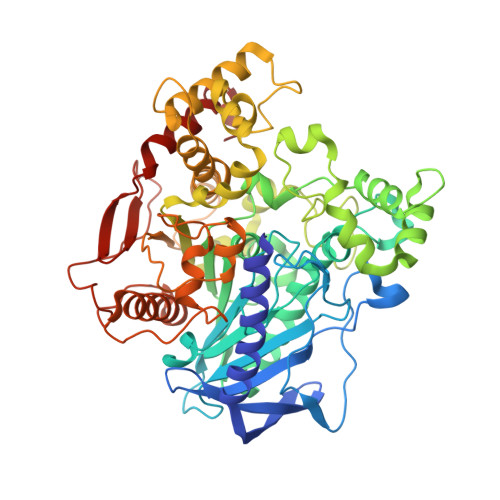Conformational Disorganization within the Active Site of a Recently Evolved Organophosphate Hydrolase Limits Its Catalytic Efficiency.
Mabbitt, P.D., Correy, G.J., Meirelles, T., Fraser, N.J., Coote, M.L., Jackson, C.J.(2016) Biochemistry 55: 1408-1417
- PubMed: 26881849
- DOI: https://doi.org/10.1021/acs.biochem.5b01322
- Primary Citation of Related Structures:
5C8V - PubMed Abstract:
The evolution of new enzymatic activity is rarely observed outside of the laboratory. In the agricultural pest Lucilia cuprina, a naturally occurring mutation (Gly137Asp) in α-esterase 7 (LcαE7) results in acquisition of organophosphate hydrolase activity and confers resistance to organophosphate insecticides. Here, we present an X-ray crystal structure of LcαE7:Gly137Asp that, along with kinetic data, suggests that Asp137 acts as a general base in the new catalytic mechanism. Unexpectedly, the conformation of Asp137 observed in the crystal structure obstructs the active site and is not catalytically productive. Molecular dynamics simulations reveal that alternative, catalytically competent conformers of Asp137 are sampled on the nanosecond time scale, although these states are less populated. Thus, although the mutation introduces the new reactive group responsible for organophosphate detoxification, the catalytic efficiency appears to be limited by conformational disorganization: the frequent sampling of low-energy nonproductive states. This result is consistent with a model of molecular evolution in which initial function-changing mutations can result in enzymes that display only a fraction of their catalytic potential due to conformational disorganization.
Organizational Affiliation:
Research School of Chemistry, Australian National University , Acton 2601, Canberra, Australia.
















